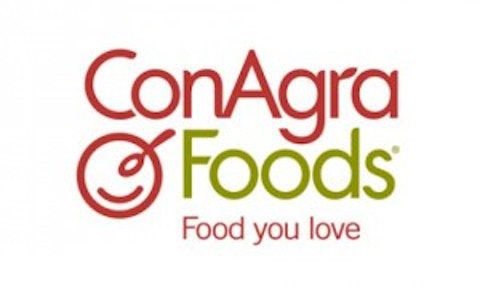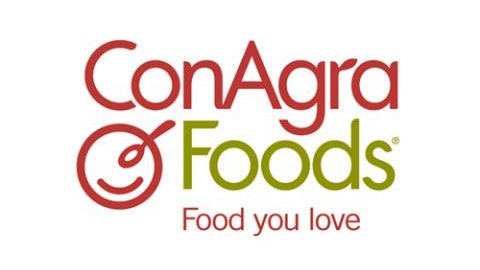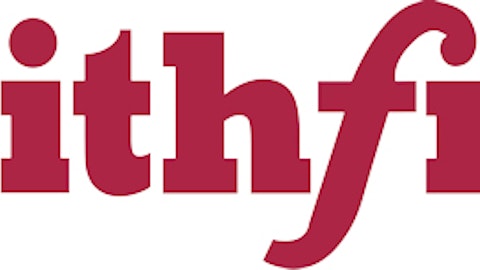Shares of ConAgra Foods, Inc. (NYSE:CAG) have advanced more than 35% in the past year. The company made a big splash during this span with the Ralcorp Holdings, Inc. (NYSE:RAH) acquisition and will now be the largest private-label food manufacturer in the United States. The run-up in shares should be encouraging to potential investors as the decade-long slump could give way to several years of out-performance and a re-rating in the shares. The stock is clearly the best value in the food space and could advance another 40% over the next two years.

Changing confidence
ConAgra Foods, Inc. (NYSE:CAG) just reported 4Q 2013 results that beat expectations. The main consumer-foods division posted positive volumes (+3%) for the first time in 11 quarters. Cost synergies related to the Ralcorp Holdings, Inc. (NYSE:RAH) acquisition have been increased by management. These favorable results were then expanded upon with a very upbeat assessment of growth in the coming years.
Management forecasts earnings-per-share advancing by at least 10% in each of the next four years. This is quite the conviction from a company that has had its struggles during the past decade. Analyst expectations are set at 12% growth for the next two years as it seems likely that this goal will prove conservative.
The company derives more than half of its sales from the consumer-foods segment, which includes brands such as Hunts, PAM, Banquet, Chef Boyardee, Healthy Choice, Orville Redenbacher, Reddi-Whip, and Marie Callender’s. The rest of the sales are derived from the commercial-foods division and Ralcorp Holdings, Inc. (NYSE:RAH).
ConAgra Foods, Inc. (NYSE:CAG) has always been known as a second-tier brand owner. Today is no different, but this fact is known by every analyst and is the main source of dislike with the stock. It is safe to say this situation is embedded in the stock price and the company’s lower margins are now more a source of upside potential.
Compelling valuation
ConAgra Foods, Inc. (NYSE:CAG) forecasts earnings per share of $2.40 and consensus expectations are at $2.42. This results in a forward price-to-earnings ratio of 14.7x. Now take a company that is viewed in a much more favorable light — Hershey Co (NYSE:HSY).
Hershey Co (NYSE:HSY) earned its reputation among investors thanks to years of consistent performance and a dominant market position in chocolate and confectionery products. The company also has EBITDA margins that are among the highest in the food industry at 20%. While this is good, it does make it unlikely that the company will expand meaningfully going forward. Despite all of this, management guided fiscal 2014 earnings per share to a range of $3.61 to $3.65. Using the high-end of that range results in a forward P/E ratio of 24.5x and growth of 13%. Now which looks like a better value?
Alternatively, there are some food companies that have a more modest valuation than Hershey Co (NYSE:HSY), but that lack any meaningful growth or face more near-term business uncertainty. Campbell Soup Company (NYSE:CPB) is one such example. Campbell Soup Company (NYSE:CPB) is now two years into its strategic transition plan. It lost another 2% market share in U.S. soups since the announcement and more than 5% in the last five years. The company continues to dominate with more than a 46% share, but the direction is clearly down.
The purchase of Bolthouse Farms is likely the first of several future acquisitions to help diversify income sources and gain access to faster growth markets. If any of these are deemed by the market to be too expensive or suffer integration problems, it would surely weigh on the performance of the stock.
Future acquisitions will also leave less cash available for dividend growth, which has grown at a meager 5% CAGR in the last five years. Management just updated fiscal 2013 earnings-per-share guidance to +6% to 7% and the sell-side is forecasting 2014 growth of 5%. Campbell Soup Company (NYSE:CPB) currently has a forward P/E ratio of 17.1x.
Like Campbell Soup Company (NYSE:CPB), Kellogg Company (NYSE:K) has struggled operationally in recent quarters and its 1Q 2013 results were no different. Sales were up a meager 2% year-over-year. Operating profit fell 4.5% and cash flow declined. The company purchased Pringles for $2.7 billion in early 2012 in what some experts deemed to be too steep of a price at 11x EBITDA. What is for sure is that debt/EBITDA has gone from 2.5x to 4.0x and the rating agencies have downgraded the company’s bonds.
Kellogg Company (NYSE:K) will be devoting cash flow to debt repayment for several years and as a result it only increased the dividend 4.5% this year. Plus the company already has limited upside with a dividend payout ratio already at 64%. Earnings per share are forecast to grow between 5% and 7% for the year. The 2.8% dividend yield will help, but it seems unlikely this stock is capable of producing total returns that can match ConAgra Foods, Inc. (NYSE:CAG) over the coming years.
The Foolish bottom line
Investors looking for a low-beta stock (three-year beta = 0.6) that offers compelling upside over the next two years should find ConAgra Foods, Inc. (NYSE:CAG) an intriguing option. The stock is clearly one of the cheapest names in the food industry. But outside of this, it offers both the potential for double-digit EPS growth and multiple expansion.
If the company can execute on 10% earnings-per-share growth for consecutive years, it is conceivable that the forward P/E would expand to at least 17x. Analysts are expecting earnings per share to clear $3.00 per share in fiscal 2016, which implies the stock could exceed $50 (currently $35) in two years.
Justin Carley has no position in any stocks mentioned. The Motley Fool has no position in any of the stocks mentioned. Justin is a member of The Motley Fool Blog Network — entries represent the personal opinion of the blogger and are not formally edited.
The article A Hidden Gem in the Food Industry originally appeared on Fool.com is written by Justin Carley.
Copyright © 1995 – 2013 The Motley Fool, LLC. All rights reserved. The Motley Fool has a disclosure policy.




